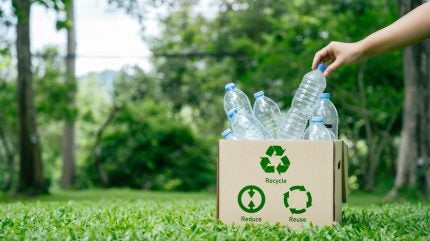
Despite ongoing challenges in negotiating a global treaty on plastic waste, countries and regions are implementing their own regulations to reduce plastic pollution.
As the international community continues to debate a comprehensive agreement, several nations have introduced new laws and initiatives aimed at limiting plastic waste and promoting more sustainable packaging.
2025 promises to bring a series of significant changes in the way plastic is handled across the globe.
Germany to introduce plastic taxation
Germany is set to introduce a plastic tax in 2025, which will target certain single-use plastics that are commonly used for convenience but are difficult to recycle. The levy, which was delayed by a year, will focus on items such as food containers and grocery bags.
The move is part of a broader effort in Europe, where the European Union already imposes a levy on member states based on the amount of non-recycled plastic waste they produce. Several other European nations, including Portugal, the Netherlands, and the United Kingdom, have implemented similar taxes.
The plastics industry has opposed these levies, arguing they will increase costs, but they are seen as a necessary step to tackle growing plastic waste issues.
Japan targets PFAS in food packaging
Japan is moving to regulate harmful chemicals in food packaging, specifically targeting PFAS (per- and polyfluoroalkyl substances). Beginning in 2025, only materials approved by Japan’s Ministry of Health, Labor, and Welfare will be permitted in the production of food containers and utensils.
This initiative is aimed at reducing the risks these chemicals pose to human health and the environment. Additionally, Japan is striving to ensure that all plastic used in packaging is recyclable by the end of 2025.
This will push manufacturers to adopt more sustainable practices, in line with global trends toward greener packaging.
Australia’s plastic packaging targets
Australia’s ambitious National Packaging Targets, established in 2018, aim to make all packaging produced and sold in the country reusable, recyclable, or compostable by 2025. Progress is being made, with packaging containing an average of 30% recycled content and over 80% being recyclable, reusable, or compostable.
However, the country is still facing challenges with recycling rates, which remain low at about 20%. In response, the Australian government has proposed significant reforms to improve plastic recovery and recycling, including a ban on PFAS in packaging and an extended producer responsibility (EPR) scheme to hold producers accountable for recycling costs.
These measures are expected to support Australia’s effort to meet its 2025 targets, although the government has acknowledged that some targets may not be fully achievable within the original timeframe.
As plastic waste reduction efforts continue to intensify, 2025 will be a pivotal year for packaging regulations worldwide.
With nations like India and the United States also advancing their own laws and regulations, the push for a global solution remains urgent, even as individual countries take action.



